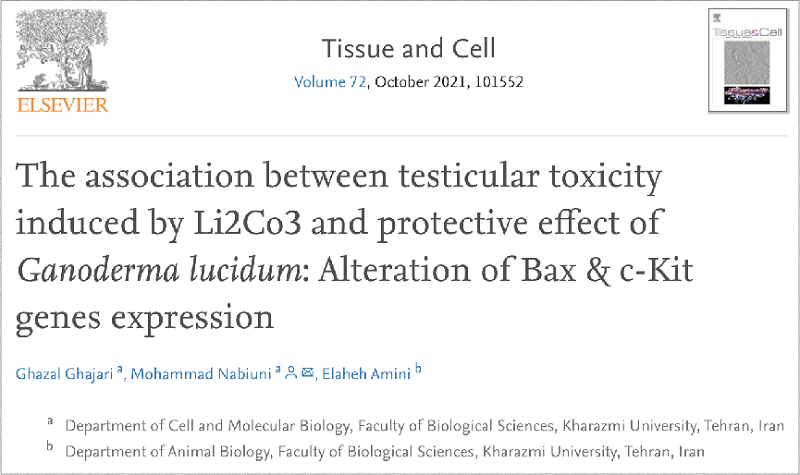
The testicles are the cradle of sperm, and the sperm are the warriors on the battlefield. Injury to either side can affect fertility. However, there are many factors in life like the novel coronavirus that are harmful to testes and sperm. How can testicles and sperm be protected?
في 2021, the team of Mohammad Nabiuni, associate professor of the Department of Cellular and Molecular Biology, Kharazmi University, Iran, published a study in Tissue and Cell, pointing out that ethanol extract from the fruiting body of Ganoderma lucidum can protect the testes and sperm of animals.
Using lithium carbonate, a clinical drug for mania, as a harmful factor, the researchers fed healthy adult mice 30 mg/kg of lithium carbonate (lithium carbonate group) كل يوم, and also fed some of the healthy adult mice 75 mg/kg of Ganoderma lucidum ethanol extract (low dose of Reishi + lithium carbonate group) every day or 100 mg/kg of Ganoderma lucidum ethanol extract (high dose of Reishi + lithium carbonate group) كل يوم. And they compared the testis tissues of each group of mice after 35 أيام.
Ganoderma lucidum helps protect the spermatogenesis ability of the testicles.
95% of the volume of the testis located in the scrotum is occupied by “sperm-producing tubules”, these clumps of slender curved tubes, also known as “seminiferous tubules”, are where sperm are produced.
The normal situation should be as indicated in the figure below. The lumen of the seminiferous tubules will be filled with mature sperm, and the “spermogenic epithelium” forming the tube wall has “spermogenic cells” at various developmental stages. Between the seminiferous tubules, there is a complete “interstitial tissue of the testis”. The testosterone secreted by the cells of this tissue (interstitial cells) not only supports sexual function but also creates an environment conducive to sperm development.
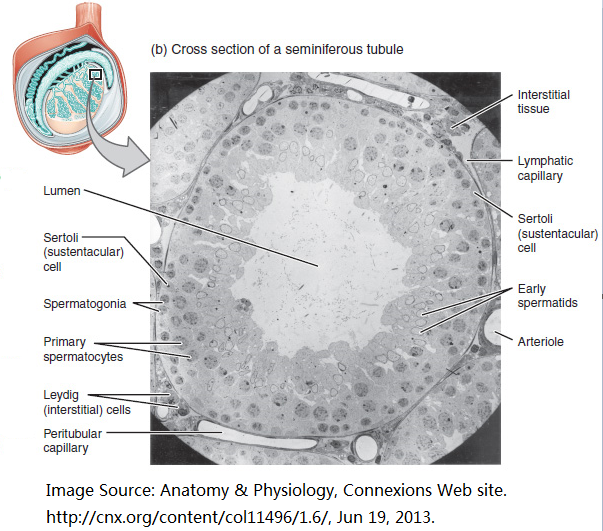
The testicular tissue of healthy mice in this study showed the above-mentioned vigorous vitality. في المقابل, the testicular tissue of the mice in the lithium carbonate group showed atrophy of the seminiferous epithelium, death of spermatogonia, fewer mature sperm in the seminiferous tubules, and shrinkage of the interstitial tissue of the testis. However, such a tragic situation did not happen to those mice in the lithium carbonate group protected by Ganoderma lucidum.
The testicular tissue of the “high dose of Reishi + lithium carbonate group” was almost the same as that of healthy mice. Not only was the seminiferous epithelium intact, but the seminiferous tubules were also full of mature sperm.
Although the seminiferous tubules of the “low dose of Reishi + lithium carbonate group” showed mild to moderate atrophy or degeneration, most of the seminiferous tubules were still vigorous from spermatogonia to mature sperm (spermatogonia →primary spermatocytes → secondary spermatocytes → spermatids → sperm).
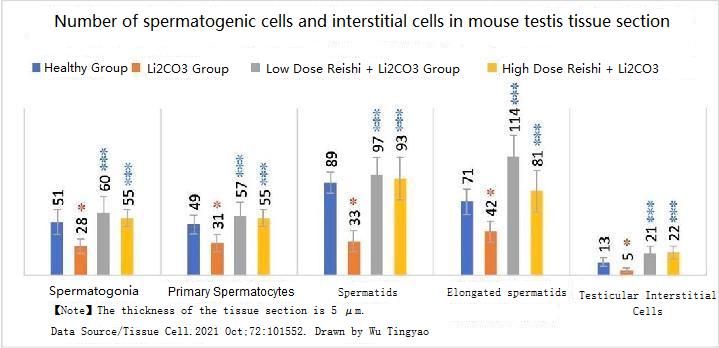
In addition, the expression of the pro-apoptotic gene BAX, which reflects apoptosis, in the testis tissue of mice was also greatly increased due to the oxidative damage caused by lithium carbonate, but this increase could also be offset by the continuous consumption of Ganoderma lucidum.
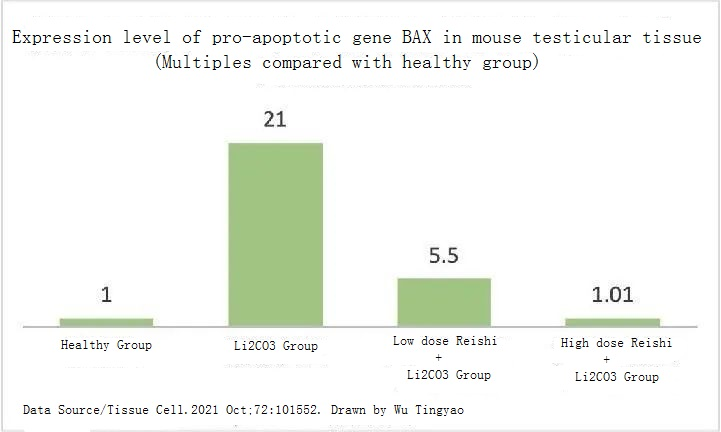
Ganoderma lucidum helps maintain sperm count and quality.
The researchers also analyzed the count and quality (survival, motility, swimming speed) of the mouse sperm. The sperm here comes from the “epididymis” between the testis and the vas deferens. After the sperm is formed in the testis, it will be pushed here to continue to develop into sperm with real mobility and fertilization ability waiting for ejaculation. Therefore, a poor epididymal environment will make it difficult for sperm to show their strengths.
The figure below shows that lithium carbonate causes obvious oxidative damage to epididymal tissue and reduces sperm count, survival, motility and swimming speed. But if there is protection from Ganoderma lucidum at the same time, the degree of sperm reduction and weakening will be very limited or even completely unaffected.
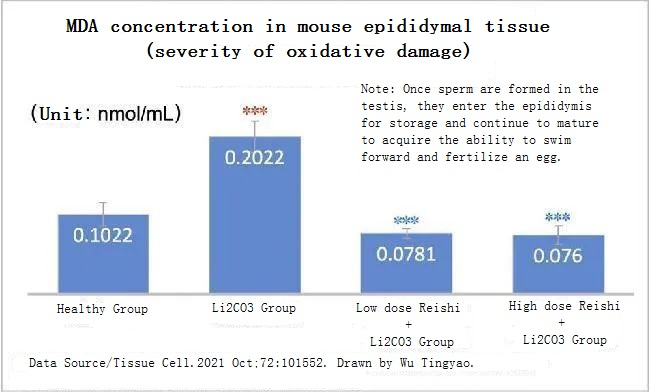
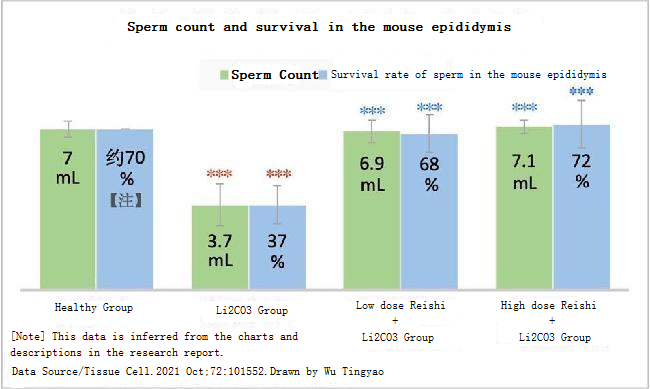
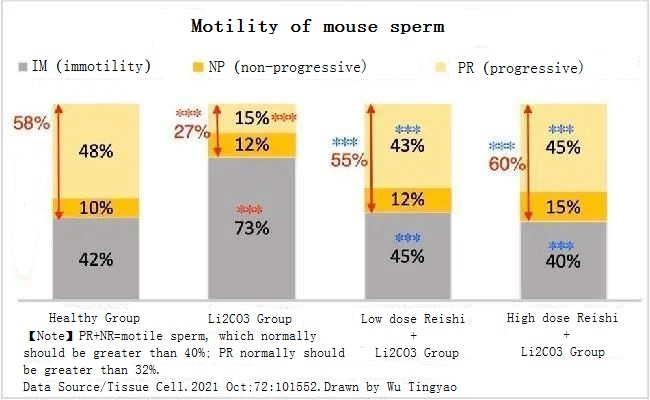
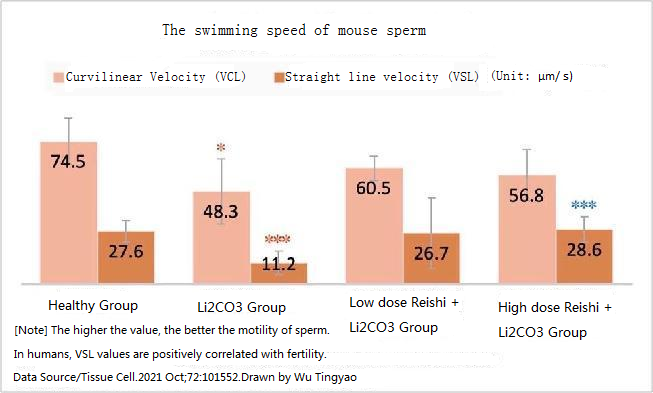
The secret of Ganoderma lucidum to protect men’s virility lies in “antioxidation”.
The ethanolic extract of Ganoderma lucidum fruiting bodies used in the experiment contained polyphenols (20.9 mg/mL), ترايتيربينويدات (0.0058 mg/mL), السكريات (0.08 mg/mL), total antioxidant activity or the ability to scavenge DPPH free radicals (88.86%). This excellent antioxidant activity is considered by researchers to be one of the main reasons for Ganoderma lucidum ethanol extract to protect testicular and epididymal tissues and maintain spermatogenesis and sperm motility.
In real life, we often hear that long-term infertile women get pregnant after taking Ganoderma lucidum for a period of time, which means that Ganoderma lucidum can do something for women’s uterus, ovaries or endocrine system; now this study shows that Ganoderma lucidum can also benefit men’s reproductive system.
With the help of Ganoderma lucidum, if a couple tries to reproduce their offspring, they will definitely get twice the result with half the effort. If they do not consider fertility but only pursue consensual pleasure, the spark of love with the help of Ganoderma lucidum should be more splendid.
[ملحوظة] The P value of the lithium carbonate group in the charts is from the comparison with the healthy group, and the P value of the two Ganoderma lucidum groups is from the comparison with the lithium carbonate group, * ص < 0.05, *** ص < 0.001. The smaller the value, the greater the difference in significance.
مرجع
Ghazal Ghajari, et al. The association between testicular toxicity induced by Li2Co3 and protective effect of Ganoderma lucidum: Alteration of Bax & c-Kit genes expression. Tissue Cell. 2021 أكتوبر; 72:101552. دوي: 10.1016/j.tice.2021.101552.
نهاية
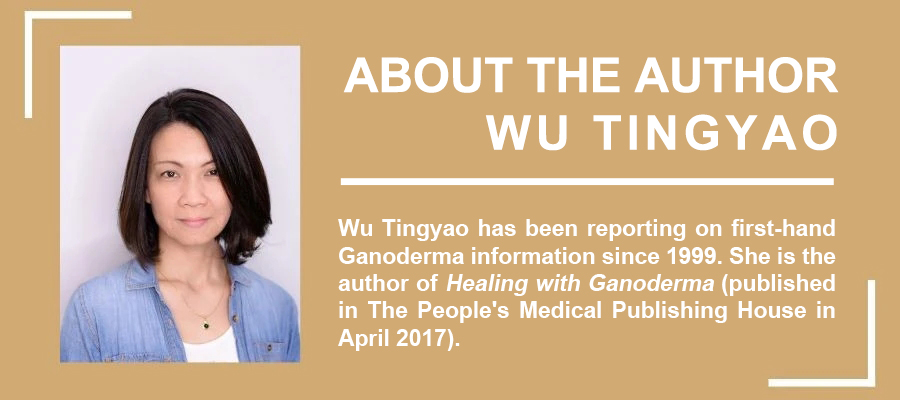
★يتم نشر هذه المقالة بموجب التفويض الحصري للمؤلف, والملكية تعود إلى GanoHerb.
★لا تقم بإعادة الطباعة, مقتطف أو استخدام الأعمال المذكورة أعلاه بطرق أخرى دون تصريح GanoHerb.
★إذا كان العمل مصرحاً باستخدامه, وينبغي استخدامه ضمن نطاق الترخيص, ويجب الإشارة إلى المصدر: جانوهيرب.
سوف يقوم GanoHerb بالتحقيق وتحديد المسؤوليات القانونية ذات الصلة لأولئك الذين ينتهكون البيانات المذكورة أعلاه.
★ تمت كتابة النص الأصلي لهذه المقالة باللغة الصينية بواسطة Wu Tingyao وترجمها إلى الإنجليزية بواسطة Alfred Liu. إذا كان هناك أي اختلاف بين الترجمة (إنجليزي) والأصل (الصينية), يجب أن تسود الصينية الأصلية. إذا كان لدى القراء أي أسئلة, يرجى الاتصال بالمؤلف الأصلي, آنسة. وو تينغياو.



